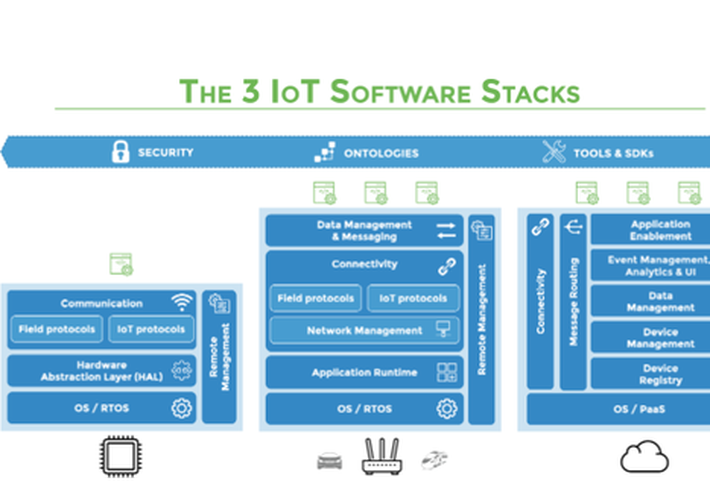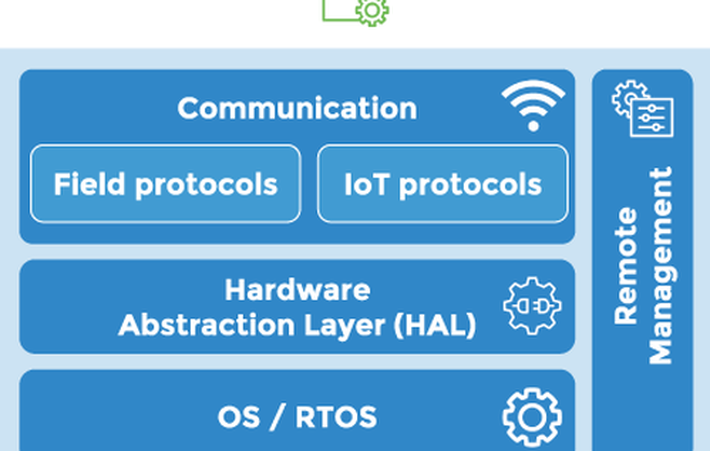
Published on 11/17/2016 | Technology
The Internet of Things (IoT) is transforming how individuals and organizations connect with customers, suppliers, partners, and other individuals. IoT is all about connecting sensors, actuators, and devices to a network and enabling the collection, exchange, and analysis of generated information.
New technology innovations in hardware, networking and, software are fueling the opportunity for new IoT solutions and use cases.Hardware innovations, like the Raspberry Pi, are making it easier, faster and cheaper to develop new devices. Networking standards for low power networks, like LoRaWAN or Sigfox, create new opportunities for connecting very small devices to a network. New standards are being developed specifically for IoT use cases, like MQTT for messaging, or OMA Lightweight M2M for device management. And finally, significant improvements in data storage, data analysis, and event processing are making it possible to support the amount of data generated in large-scale IoT deployments.
In parallel to the emerging IoT industry, the general software industry has moved towards open source as being a key supplier of critical software components. The phrase “software is eating the world” reflects the importance of software in general, but in reality the software industry is now dominated by open source. This is true for key software categories, including Operating Systems (Linux), Big Data (Apache Hadoop, Apache Cassandra), Middleware (Apache HTTP Server, Apache Tomcat, Eclipse Jetty), Cloud (OpenStack, Cloud Foundry, Kubernetes), and Microservices (Docker).
The purpose of this article is to look at the new technology requirements and architectures required for IoT solutions. It will identify three stacks of software required by any IoT solution. Similar to how the LAMP (Linux/Apache HTTP Server/MySQL/PHP) stack has dominated the web infrastructures, it is believed a similar open source stack will dominate IoT deployments.
Read the full report at Eclipse.org.
A typical IoT solution is characterized by many devices (i.e. things) that may use some form of gateway to communicate through a network to an enterprise back-end server that is running an IoT platform that helps integrate the IoT information into the existing enterprise. The roles of the devices, gateways, and cloud platform are well defined, and each of them provides specific features and functionality required by any robust IoT solution.
The “Thing” in the IoT is the starting point for an IoT solution. It is typically the originator of the data, and it interacts with the physical world. Things are often very constrained in terms of size or power supply; therefore, they are often programmed using microcontrollers (MCU) that have very limited capabilities. The microcontrollers powering IoT devices are specialized for a specific task and are designed for mass production and low cost.
The software running on MCU-based devices aims at supporting specific tasks. The key features of the software stack running on a device may include:
1. IoT operating system – many devices will run with ‘bare metal’, but some will have embedded or real-time operating systems that are particularly suited for small constrained devices, and that can provide IoT-specific capabilities.
2. Hardware abstraction – a software layer that enables access to the hardware features of the MCU, such as flash memory, GPIOs, serial interfaces, etc.
3. Communication support – drivers and protocols allowing to connect the device to a wired or wireless protocol like Bluetooth, Z-Wave, Thread, CAN bus, MQTT, CoAP, etc., and enabling device communication.
4. Remote management – the ability to remotely control the device to upgrade its firmware or to monitor its battery level.

The IoT gateway acts as the aggregation point for a group of sensors and actuators to coordinate the connectivity of these devices to each other and to an external network. An IoT gateway can be a physical piece of hardware or functionality that is incorporated into a larger “Thing” that is connected to the network. For example, an industrial machine might act like a gateway, and so might a connected automobile or a home automation appliance.
An IoT gateway will often offer processing of the data at the ‘edge’ and storage capabilities to deal with network latency and reliability. For device to device connectivity, an IoT gateway deals with the interoperability issues between incompatible devices. A typical IoT architecture would have many IoT gateways supporting masses of devices.
IoT gateways are becoming increasingly dependent on software to implement the core functionality. The key features of a gateway software stack include:
1. Operating system – typically a general purpose operating system such as Linux.
2. Application container or run-time environment – IoT gateways will often have the ability to run application code, and to allow the applications to be dynamically updated. For example, a gateway may have support for Java, Python, or Node.js.
3. Communication and Connectivity – IoT gateways need to support different connectivity protocols to connect with different devices (e.g. Bluetooth, Wi-Fi, Z-Wave, ZigBee). IoT Gateways also need to connect to different types of networks (e.g. Ethernet, cellular, Wi-Fi, satellite, etc.…) and ensure the reliability, security, and confidentiality of the communications.
4. Data management & Messaging – local persistence to support network latency, offline mode, and real-time analytics at the edge, as well as the ability to forward device data in a consistent manner to an IoT Platform.
5. Remote management – the ability to remotely provision, configure, startup/shutdown gateways as well as the applications running on the gateways.
The IoT Cloud Platform represents the software infrastructure and services required to enable an IoT solution. An IoT Cloud Platform typically operates on a cloud infrastructure (e.g. OpenShift, AWS, Microsoft Azure, Cloud Foundry) or inside an enterprise data center and is expected to scale both horizontally, to support the large number of devices connected, as well as vertically to address the variety of IoT solutions. The IoT Cloud Platform will facilitate the interoperability of the IoT solution with existing enterprise applications and other IoT solutions.
The core features of an IoT Cloud Platform include:
1. Connectivity and Message Routing – IoT platforms need to be able to interact with very large numbers of devices and gateways using different protocols and data formats, but then normalize it to allow for easy integration into the rest of the enterprise.
2. Device Management and Device Registry – a central registry to identify the devices/gateways running in an IoT solution and the ability to provision new software updates and manage the devices.
3. Data Management and Storage – a scalable data store that supports the volume and variety of IoT data.
4. Event Management, Analytics & UI – scalable event processing capabilities, ability to consolidate and analyze data, and to create reports, graphs, and dashboards.
5. Application Enablement – ability to create reports, graphs, dashboards, … and to use API for application integration.
Cross-Stack Functionality
Across the different stacks of an IoT solution are a number of features that need to be considered for any IoT architecture, including:
1. Security – Security needs to be implemented from the devices to the cloud. Features such as authentication, encryption, and authorization need be part of each stack.
2. Ontologies – The format and description of device data is an important feature to enable data analytics and data interoperability. The ability to define ontologies and metadata across heterogeneous domains is a key area for IoT.
3. Development Tools and SDKs – IoT Developers will require development tools that support the different hardware and software platforms involved.
Key characteristics for IoT Stacks
There are some common characteristics that each IoT stack should embrace, including
1. Loosely coupled – Three IoT stacks have been defined but it is important that each stack can be used independently of the other stacks. It should be possible to use an IoT Cloud Platform from one supplier with an IoT Gateway from another supplier and a third supplier for the device stack.
2. Modular – Each stack should allow for the features to be sourced from different suppliers.
3. Platform-independent – Each stack should be independent of the host hardware and cloud infrastructure. For instance, the device stack should be available on multiple MCUs and the IoT Cloud Platform should run on different Cloud PaaS.
4. Based on open standards – Communication between the stacks should be based on open standards to ensure interoperability.
5. Defined APIs – Each stack should have defined APIs that allow for easy integration with existing applications and integration with other IoT solutions.
Conclusion
Any IoT Solution requires substantial amount of technology in the form of software, hardware, and networking. In this white paper we have defined the key software requirements across three different stacks. Many software and hardware vendors will offer complete stacks or parts of each stack. However, for IoT industry to be successful these software stacks need to be independent of each other and available from different sources.
UPDATE: Part 2 of the series is discuss how Eclipse IoT implements the 3 software stacks now available.